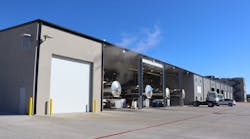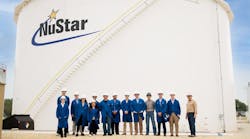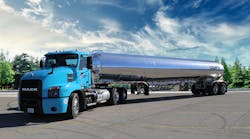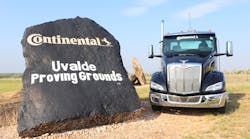INRIX, a provider of traffic and navigation services in North America, announced a mid-year INRIX National Traffic Scorecard special report, which found that traffic gridlock, during peak periods on major roads in urban America, had reached its low point in the second quarter of 2009 and has now started to increase.
Traffic congestion across the nation is rising due to signs of economic recovery, initial rollouts of highway construction projects funded by federal stimulus packages, and lower fuel prices. In fact, 64 of the top 100 most populated cities in the United States experienced increases in traffic congestion levels in early 2009. The annual INRIX Scorecard contains accurate and current information regarding overall congestion and bottlenecks on America's major roadways, and is compiled using tens of billions of data points from INRIX's network of more than one million GPS-enabled cars and trucks traveling across nearly one million miles of roads.
An especially interesting nugget from the Scorecard showed that Las Vegas experienced the biggest increase (2.4%) in travel times during peak commute periods year-over-year, most likely due to major construction along Interstate 15 that began in summer 2008. Other noteworthy increases include Baton Rouge (1.9%) — the only region that experienced travel time increases in 2008 — and Washington DC (1.8%), seemingly unaffected by the nation's economic turmoil of the past year.
Cities with the largest decrease in travel times include Ogden UT (-5.6%), Bridgeport CT (-4.5%), San Francisco CA (-2.8%), San Diego CA (-2.7%), and Chicago IL (-2.7%). Reasons for the drops in each region vary, for example, the completion of a major road construction project in late 2008 and improved winter weather in 2009 contributed to Ogden's decrease, and softer economic conditions hit Chicago, where unemployment surpassed 11% in June 2009.
INRIX also analyzed and ranked the worst metro traffic bottlenecks across the nation and found that New York City, Los Angeles CA, and Chicago continued to dominate the rankings in commuting nightmares. Westbound on the Cross Bronx Expressway (I-95) in New York City remains the worst bottleneck in the nation, where traffic crawls more than 90 hours each week at an average of only 11 mph.
By analyzing traffic on major highways in the nation's 100 largest metropolitan areas, the Scorecard provides a comprehensive and national scale glimpse into the intractable issues of urban traffic congestion. According to the report, the top 10 most congested cities in the first half of 2009 were:
-
Los Angeles CA
-
New York NY
-
Chicago IL
-
Washington DC (from 5th in first half of 2008)
-
Dallas TX (from 4th in first half of 2008)
-
Houston TX
-
San Francisco CA
-
Boston MA
-
Seattle WA
-
Philadelphia PA
Additionally, available for the first time, INRIX analyzed information from its data warehouse to provide a snapshot of commercial freight traffic concentration. As a result, INRIX found that while the nation's busiest longhaul freight roadways cut across 28 states, more than 95% of this mileage comes from just 10 states — including Arkansas, Georgia, Tennessee, and Texas. Roads that serve as thoroughfares in the middle of the country — such as I-40, I-75, I-81, and I-35 — how more relative longhaul freight usage in general than the roads at the edges of the country, such as I-5 and I-95.
The state of traffic:
-
The typical urban commuter sits 30 hours a year in slow traffic.
-
Los Angeles has the nation's highest metropolitan travel times during peak commute hours, followed by Honolulu HI. Drivers in both cities spend an extra nine minutes on the roads for what would be a 30-minute commute without traffic.
-
Washington DC moved up to 3rd (from 6th in the first half of 2008) with drivers losing more than six minutes on average for 30-minute commutes.
-
Los Angeles, Washington DC, and Dallas were the only cities in the Top 10 that experienced increased congestion.
-
Among the most congested cities in terms of travel times, Baton Rouge's ranking saw the biggest jump, moving from 22nd in 2008 to 13th. San Diego had the biggest drop, from 13th to 19th, with commuters in both cities losing 30-40 minutes per week stuck in traffic.
-
Delays in evening peak commute periods were higher than their corresponding morning peak periods every weekday. Wednesday, 8-9 am continues as the busiest morning peak hour nationwide and Friday, 5-6 pm continues as the busiest evening peak hour - when commutes that would take drivers 60 minutes with no traffic, are now taking 70-71 minutes on average.
-
Across the country off-peak periods — mid-days, evenings, overnights, and weekends — generally showed small increases in travel times from 2008 to 2009, likely indicating that work zones from construction and maintenance activities have increased. This is a signal that “stimulus projects” are starting to have a noticeable impact.
-
More than 2,500 miles of the nation's most important thoroughfares are congested more than five hours each week — an hour each workday. More than 400 of these miles experience more than four hours of congestion each workday.
The good news for consumers is that there are now plenty of information sources to help them deal with traffic. Real-time traffic information is now available on services like Ford SYNC with Traffic, Directions, and Information; the new highly-acclaimed INRIX Traffic! free iPhone application; AT&T Navigator; MapQuest.com; 3D traffic forecasts on local broadcast TV stations; and hundreds of mobile applications.
INRIX is continually exploring ways to help consumers, businesses, and public officials better understand issues that can affect the flow of traffic and how to solve these problems in the future. In February 2009, INRIX published its second annual INRIX National Traffic Scorecard. The report was the first of its kind to rank and provide detailed information on the 100 most congested US metropolitan areas and the 100 worst traffic bottlenecks, all based upon calendar year 2008 traffic information. The company also released its first Scorecard Special Report, The Impact of Fuel Prices on Consumer Behavior and Traffic Congestion, in October 2008, analyzing how volatile fuel prices affected traffic and consumer driving habits.
For more information about traffic in your city or to see the complete National Traffic Scorecard, visit: http://inrix.com/scorecard/ and to view videos about the report go to http://youtube.com/INRIXTraffic.








